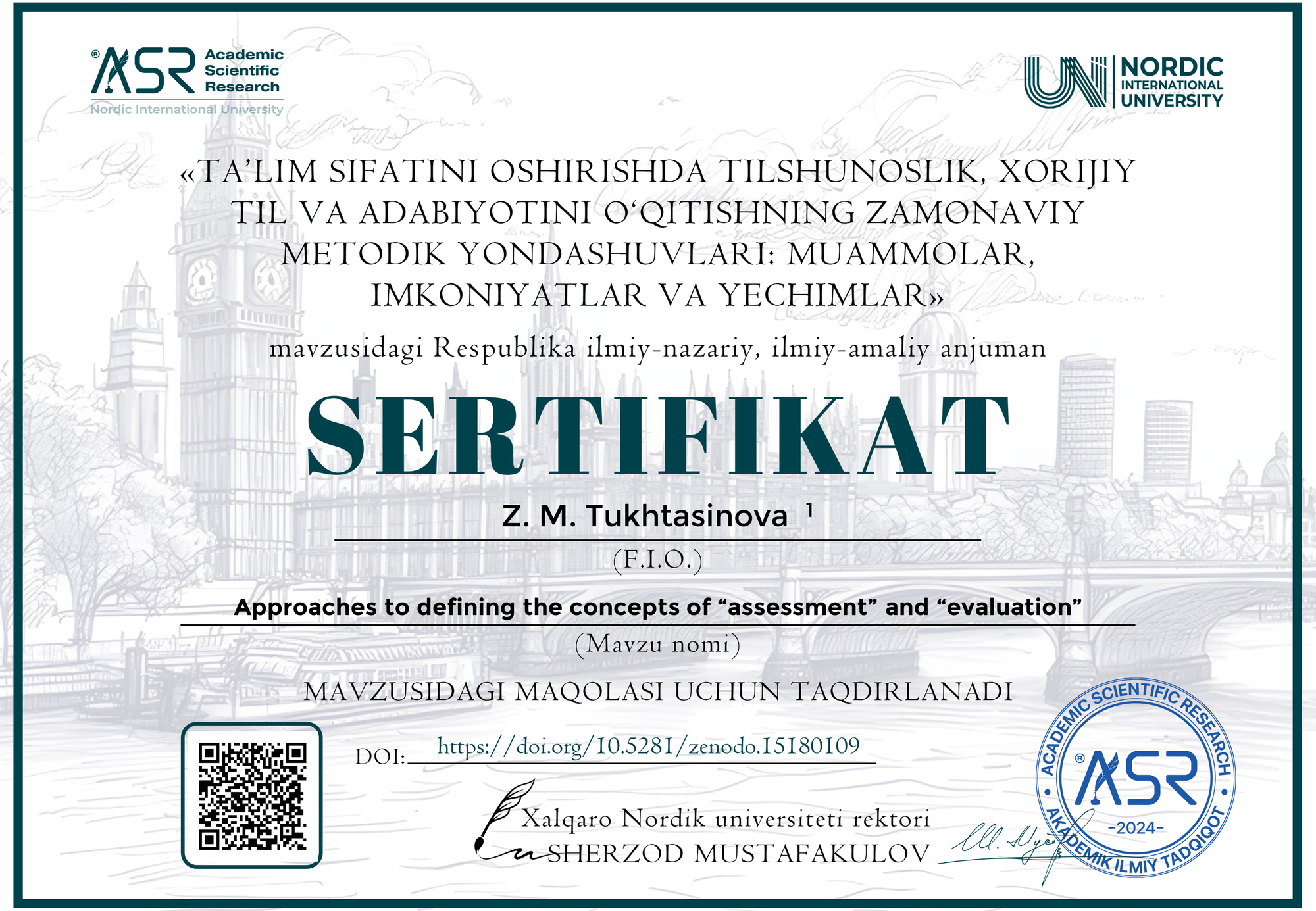Z. M. Tukhtasinova 1

DOI: https://doi.org/10.5281/zenodo.15180109
Zenodo community: https://zenodo.org/records/15180109
Nordic_press journal: https://research.nordicuniversity.org/index.php/nordic/article/view/2273
MAQOLANI YUKLAB OLISH
SERTIFIKATNI YUKLAB OLISH
REVIEW:
This article provides a well-structured and academically grounded exploration of the distinction between “assessment” and “evaluation” in the context of language education. Through a blend of theoretical reflection, dictionary definitions, and pedagogical insight, the author contributes to a clearer understanding of how these two often-interchanged terms differ in purpose and practice.
Strengths:
Clarity and Focus:
The article succeeds in clarifying the conceptual boundaries between “assessment” and “evaluation,” a distinction that is crucial yet frequently misunderstood in both theory and practice.Theoretical Support:
The author supports their discussion with authoritative references, including CEFR documentation and works from contemporary educational scholars, enhancing the academic validity of the arguments presented.Contextual Relevance:
The focus on Uzbekistan’s educational reforms and the implementation of CEFR standards provides valuable context and demonstrates the real-world relevance of the discussion for local educators.Balanced Approach:
The paper effectively balances theoretical definitions with practical implications, such as formative versus summative assessment, informal versus formal methods, and the role of feedback in supporting student development.Conclusion and Reflection:
The concluding section eloquently addresses the evolving nature of educational assessment and emphasizes the shift toward authentic evaluation, aligning with global trends in pedagogy.Suggestions for Improvement:
Depth of Analysis:
While the definitions are presented clearly, a deeper critical analysis—possibly with examples from classroom settings—would make the discussion more concrete and applicable.Visual Structure:
A comparison table or flowchart highlighting the key differences between assessment and evaluation could enhance reader comprehension and make the information more accessible.Language and Editing:
Minor grammatical improvements and stylistic polishing (e.g., article usage, sentence cohesion) would increase fluency and overall professionalism.Conclusion and Recommendation:
This article is a timely and insightful contribution to the field of education, particularly in the context of English language teaching and reform in Uzbekistan. It addresses a significant conceptual issue in a clear and informative way, making it valuable for both novice and experienced educators. With some minor revisions for clarity and structure, this paper is suitable for publication.



